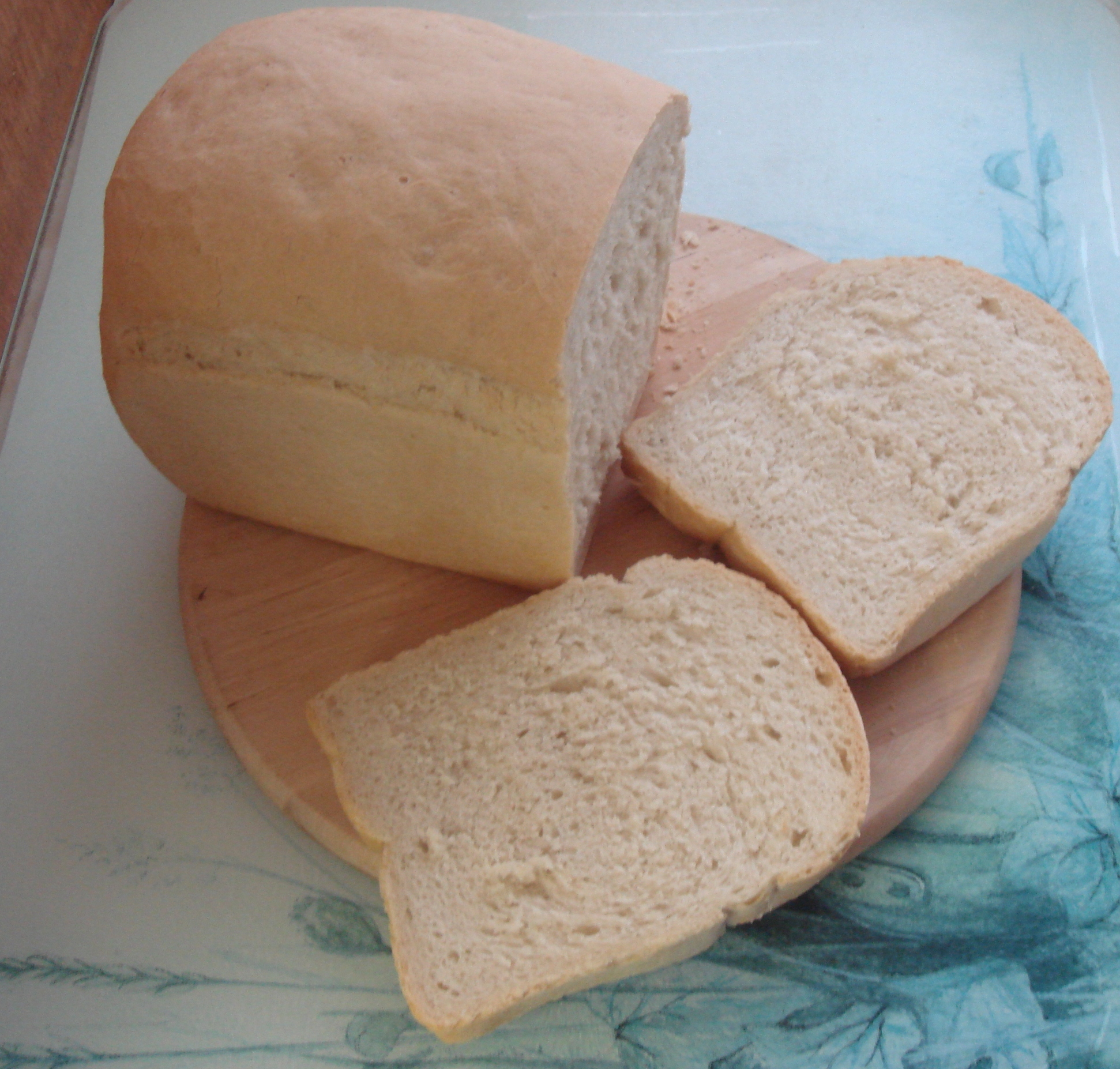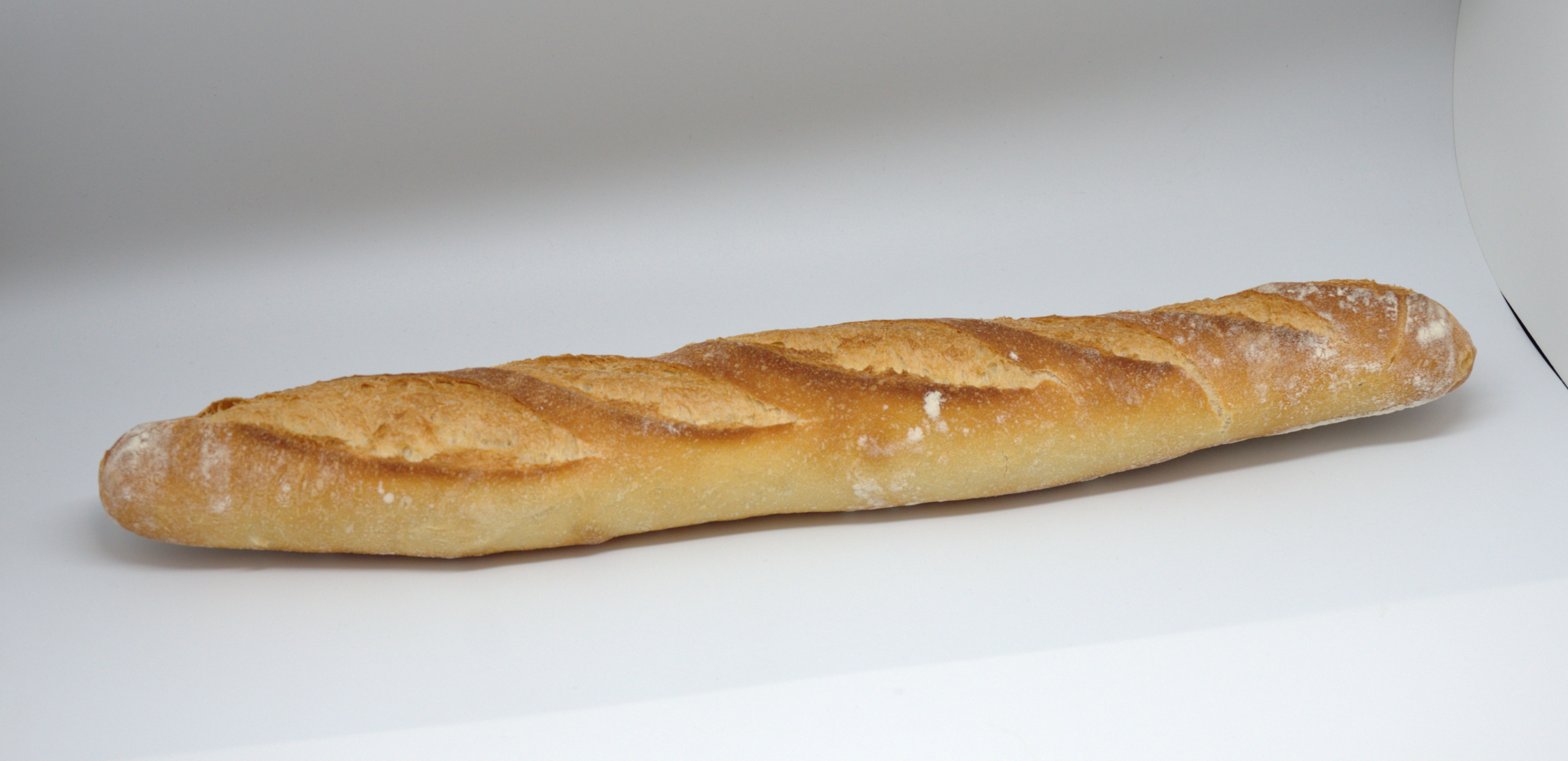|
Acme Bread
The Acme Bread Company (also known as Acme Bread) is a Berkeley, California-based bakery that is one of the pioneers of the San Francisco Bay Area's " Bread Revolution," which in turn created the modern "artisan bread" movement in America, and remains a "benchmark" for commercial handmade bread. Etymology Acme (ακμή; English transliteration: ''akmē'') is Ancient Greek for "(highest) point, edge; peak of anything", being used in English with the meaning of "prime" or "the best", initially when referring to a period in someone's life and then extending to anything or anyone who reaches perfection in a certain regard. Origin Founder Steve Sullivan grew up in Los Gatos, California, and enrolled at the University of California, Berkeley in 1975, intending to major in rhetoric. He earned money as a busboy In North America, a busser, more commonly known as a busboy or busgirl, is a person who works in the restaurant and catering industry clearing tables, taking dirty dishe ... [...More Info...] [...Related Items...] OR: [Wikipedia] [Google] [Baidu] |
Berkeley, California
Berkeley ( ) is a city on the eastern shore of San Francisco Bay in northern Alameda County, California, United States. It is named after the 18th-century Irish bishop and philosopher George Berkeley. It borders the cities of Oakland and Emeryville to the south and the city of Albany and the unincorporated community of Kensington to the north. Its eastern border with Contra Costa County generally follows the ridge of the Berkeley Hills. The 2020 census recorded a population of 124,321. Berkeley is home to the oldest campus in the University of California System, the University of California, Berkeley, and the Lawrence Berkeley National Laboratory, which is managed and operated by the university. It also has the Graduate Theological Union, one of the largest religious studies institutions in the world. Berkeley is considered one of the most socially progressive cities in the United States. History Indigenous history The site of today's City of Berkeley was the territo ... [...More Info...] [...Related Items...] OR: [Wikipedia] [Google] [Baidu] |
Doobie Brothers
The Doobie Brothers are an American rock band formed in 1970 in San Jose, California, known for their flexibility in performing across numerous genres and their vocal harmonies. Active for five decades, with their greatest success in the 1970s, the group's current lineup consists of founding members Tom Johnston (guitars, vocals) and Patrick Simmons (guitars, vocals), alongside Michael McDonald (keyboards, vocals) and John McFee (guitars, pedal steel, violin, backing vocals), and touring musicians including John Cowan (bass, vocals), Marc Russo (saxophones), Ed Toth (drums), and Marc Quiñones (percussion). Other long-serving members of the band include guitarist Jeff "Skunk" Baxter (1974–1979), bassist Tiran Porter (1972–1980, 1987–1992) and drummers John Hartman (1970–1979, 1987–1992), Michael Hossack (1971–1973, 1987–2012), and Keith Knudsen (1973–1982, 1993–2005). They performed gospel influenced songs such as "Take Me in Your Arms (Rock Me a Little While ... [...More Info...] [...Related Items...] OR: [Wikipedia] [Google] [Baidu] |
White Bread
White bread typically refers to breads made from wheat flour from which the bran and the germ layers have been removed from the whole wheatberry as part of the flour grinding or milling process, producing a light-colored flour. This milling process can give white flour a longer shelf life by removing the natural oils from the whole grain. Removing the oil allows products made with the flour, like white bread, to be stored for longer periods of time avoiding potential rancidity. The flour used in white breads is often bleached further—by the use of flour bleaching agents such as potassium bromate, azodicarbonamide, or chlorine dioxide gas to remove any slight natural yellow shade and make its baking properties more predictable. This is banned in the EU. Some chemicals are also banned from use in other countries. In the United States, consumers sometimes refer to white bread as "sandwich bread" or "sandwich loaf". It is often perceived as an unhealthy, bland, and unsophisticat ... [...More Info...] [...Related Items...] OR: [Wikipedia] [Google] [Baidu] |
Croutons
A crouton is a piece of rebaked bread, often cubed and seasoned. Croutons are used to add texture and flavor to salads—notably the Caesar salad— or eaten as a snack food. Etymology The word crouton is derived from the French ''croûton'', itself a diminutive of ''croûte'', meaning "crust". ''Croutons'' are often seen in the shape of small cubes, but they can be of any size and shape, up to a very large slice. Many people now use crouton for croute, so the usage has changed. Historically, however, a croute was a slice of a baguette lightly brushed with oil or clarified butter and baked. In English descriptions of French cooking, ''croûte'' is not only a noun but also has a verb form that describes the cooking process that transforms the bread into the crust. Preparation The preparation of croutons is relatively simple. Typically the cubes of bread are lightly coated in oil or butter (which may be seasoned or flavored for variety) and then baked. Croutons can also be cut ... [...More Info...] [...Related Items...] OR: [Wikipedia] [Google] [Baidu] |
Croissant
A croissant is a buttery, flaky, Austrian viennoiserie pastry inspired by the shape of the Austrian kipferl but using the French yeast-leavened laminated dough. Croissants are named for their historical crescent shape, the dough is layered with butter, rolled and folded several times in succession, then rolled into a thin sheet, in a technique called laminating. The process results in a layered, flaky texture, similar to a puff pastry. Crescent-shaped breads have been made since the Renaissance, and crescent-shaped cakes possibly since antiquity but using brioche dough. Kipferls have long been a staple of Austrian, and French bakeries and pâtisseries. The modern croissant was developed in the early 20th century when French bakers replaced the brioche dough of the kipferl with a yeast-leavened laminated dough. In the late 1970s, the development of factory-made, frozen, preformed but unbaked dough made them into a fast food that could be freshly baked by unskilled labor. ... [...More Info...] [...Related Items...] OR: [Wikipedia] [Google] [Baidu] |
Pastries
Pastry is baked food made with a dough of flour, water and shortening (solid fats, including butter or lard) that may be savoury or sweetened. Sweetened pastries are often described as '' bakers' confectionery''. The word "pastries" suggests many kinds of baked products made from ingredients such as flour, sugar, milk, butter, shortening, baking powder, and eggs. Small tarts and other sweet baked products are called pastries as a synecdoche. Common pastry dishes include pies, tarts, quiches, croissants, and pasties. The French word pâtisserie is also used in English (with or without the accent) for the same foods. Originally, the French word referred to anything, such as a meat pie, made in dough (''paste'', later ''pâte'') and not typically a luxurious or sweet product. This meaning still persisted in the nineteenth century, though by then the term more often referred to the sweet and often ornate confections implied today. Pastry can also refer to the pastry dough, from w ... [...More Info...] [...Related Items...] OR: [Wikipedia] [Google] [Baidu] |
Roll (food)
This is a list of rolled foods. Many types of rolled foods exist, including those in the forms of dishes, prepared foods, snacks and candies. Rolled foods See also * List of dumplings * List of stuffed dishes * Roll (other) Roll or Rolls may refer to: Movement about the longitudinal axis * Roll angle (or roll rotation), one of the 3 angular degrees of freedom of any stiff body (for example a vehicle), describing motion about the longitudinal axis ** Roll (aviation ... References {{Lists of prepared foods Rolled Foods ... [...More Info...] [...Related Items...] OR: [Wikipedia] [Google] [Baidu] |
Batard (bread)
Bâtard (Batard in English transliteration) may refer to: * Bâtard, a type of bread similar to baguette, but shorter * ''Bâtard'', a short story by Jack London (1902) * Bâtard-Montrachet, a grand cru vineyard in the Côte de Beaune * ''La Batarde'', a novel by Violette Leduc (1962) * Bâtard (restaurant) Bâtard is a French restaurant in New York City. The restaurant opened in 2014, replacing French restaurant Corton. __NOTOC__ History The space occupied by Bâtard was formerly home to the restaurants Montrachet and Corton. Drew Nieporent operat ..., a French restaurant in New York City See also * Bastard (other) {{disambiguation ... [...More Info...] [...Related Items...] OR: [Wikipedia] [Google] [Baidu] |
Baguette
A baguette (; ) is a long, thin type of bread of French origin that is commonly made from basic lean dough (the dough, though not the shape, is defined by French law). It is distinguishable by its length and crisp crust. A baguette has a diameter of about and a usual length of about , although a baguette can be up to long. In November 2018, documentation surrounding the "craftsmanship and culture" of making this bread was added to the French Ministry of Culture's National Inventory of Intangible Cultural Heritage. In 2022, the artisanal know-how and culture of baguette bread was inscribed to the UNESCO Intangible Cultural Heritage Lists. History Much of the history of the baguette is speculation; however, some facts can be established. Long, stick-like breads in France became more popular during the 18th century, French bakers started using " ''gruau''," a highly refined Hungarian high-milled flour in the early 19th century, Viennese steam oven baking was introduced to ... [...More Info...] [...Related Items...] OR: [Wikipedia] [Google] [Baidu] |
Zinfandel
Zinfandel (also known as Primitivo) is a variety of black-skinned wine grape. The variety is grown in over 10 percent of California vineyards. DNA analysis has revealed that it is genetically equivalent to the Croatian grapes Crljenak Kaštelanski and Tribidrag, as well as to the Primitivo variety traditionally grown in Apulia (the "heel" of Italy), where it was introduced in the 18th century and Kratošija in Montenegro.Jancis Robinson, 'The Great Grapevine'' in ''The Financial Times'', October 12th, 2012 The grape found its way to the United States in the mid-19th century, where it became known by variations of a name applied to a different grape, likely "Zierfandler" from Austria. The grapes typically produce a robust red wine, although, in the United States, a semi-sweet rosé (blush-style) wine called White Zinfandel has six times the sales of the red wine. The grape's high sugar content can be fermented into levels of alcohol exceeding 15 percent. The taste of the red ... [...More Info...] [...Related Items...] OR: [Wikipedia] [Google] [Baidu] |
Cabernet Sauvignon
Cabernet Sauvignon () is one of the world's most widely recognized red wine grape varieties. It is grown in nearly every major wine producing country among a diverse spectrum of climates from Australia and British Columbia, Canada to Lebanon's Beqaa Valley. Cabernet Sauvignon became internationally recognized through its prominence in Bordeaux wines, where it is often blended with Merlot and Cabernet Franc. From France and Spain, the grape spread across Europe and to the New World where it found new homes in places like California's Santa Cruz Mountains, Paso Robles, Napa Valley, New Zealand's Hawke's Bay, South Africa's Stellenbosch region, Australia's Margaret River, McLaren Vale and Coonawarra regions, and Chile's Maipo Valley and Colchagua. For most of the 20th century, it was the world's most widely planted premium red wine grape until it was surpassed by Merlot in the 1990s. However, by 2015, Cabernet Sauvignon had once again become the most widely planted wine gra ... [...More Info...] [...Related Items...] OR: [Wikipedia] [Google] [Baidu] |
Yeast In Winemaking
The role of yeast in winemaking is the most important element that distinguishes wine from fruit juice. In the absence of oxygen, yeast converts the sugars of the fruit into alcohol and carbon dioxide through the process of fermentation.Jeff Cox ''"From Vines to Wines: The Complete Guide to Growing Grapes and Making Your Own Wine"'' pp. 133–36 Storey Publishing 1999 The more sugars in the grapes, the higher the potential alcohol level of the wine if the yeast are allowed to carry out fermentation to dryness.D. Bird ''"Understanding Wine Technology"'' pp. 67–73 DBQA Publishing 2005 Sometimes winemakers will stop fermentation early in order to leave some residual sugars and sweetness in the wine such as with dessert wines. This can be achieved by dropping fermentation temperatures to the point where the yeast are inactive, sterile filtering the wine to remove the yeast or fortification with brandy or neutral spirits to kill off the yeast cells. If fermentation is unintenti ... [...More Info...] [...Related Items...] OR: [Wikipedia] [Google] [Baidu] |



.jpg)





